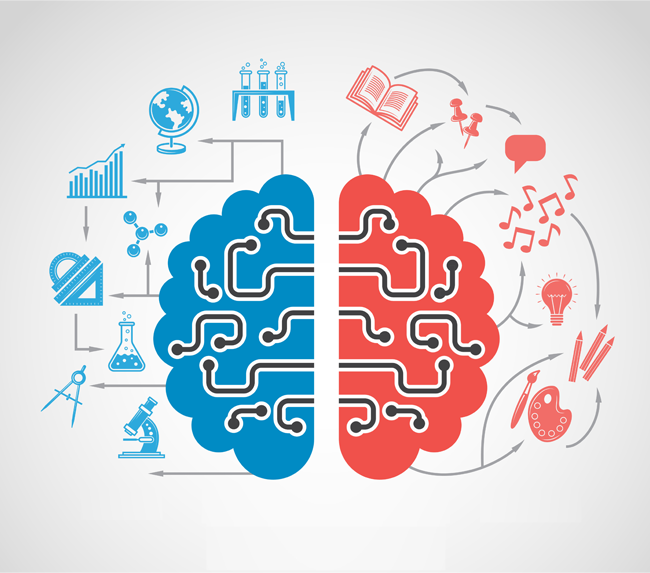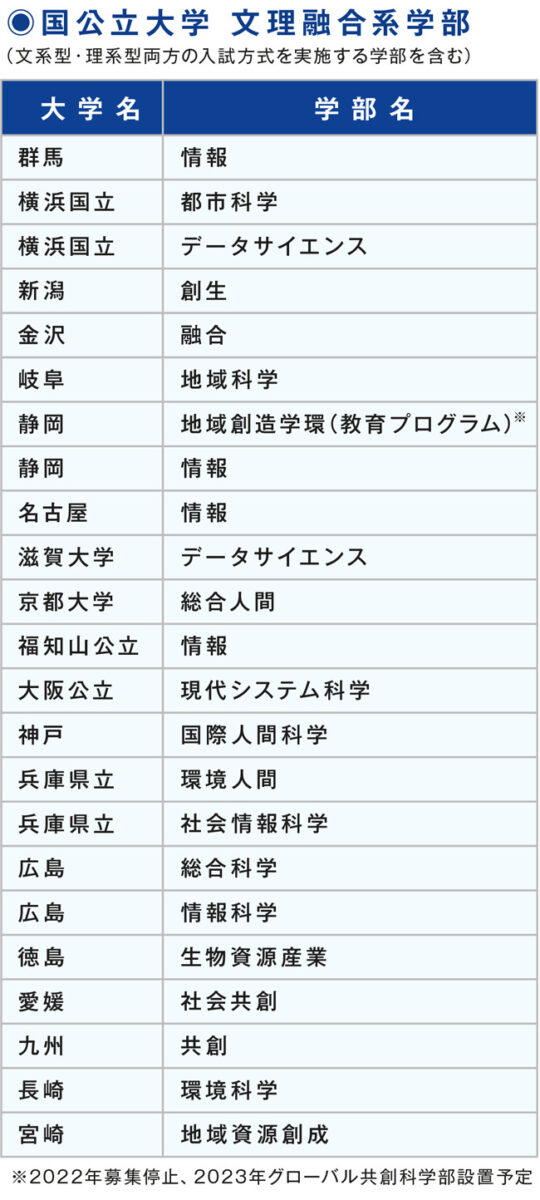In recent years, an increasing number of faculties newly established at national universities are advocating the fusion of humanities and sciences. In 2023, new establishments such as Kanazawa University (Faculty of Integrated Science and Technology) and Shizuoka University (Faculty of Global Co-creation Science) are planned.In addition to these, Hitotsubashi University (Faculty of Social Data Science) can be said to be a fusion of humanities and sciences.By the way, from June of this year, a new subcommittee (university promotion subcommittee) was added to the university subcommittee of the Central Council for Education.It is a faculty of humanities and sciences that is becoming a national policy.

The first agenda of the University Promotion Subcommittee is cross-humanities and science-integrated education.
The Central Council for Education, which deliberates on the education policy of the Ministry of Education, Culture, Sports, Science and Technology, has several subcommittees.Among them, the university subcommittee is mainly responsible for higher education policies such as universities.Various subcommittees and working groups have been established under the university subcommittee, but from June of this year, a new university promotion subcommittee has been added.
The name of the subcommittee called University Promotion gives the impression that it deals with private school subsidies, regional revitalization, and subsidies for operating expenses of national university corporations, but the first agenda held on June 17 was , Cross-literature / integrated education.Looking at the items to be examined by the subcommittee, in addition to cross-cultural and integrated literary education, promotion of education that expands the range of learning through double majors, etc. It also includes being involved in education at elementary and junior high schools and high schools.
In addition, the realization of learner-oriented education, quality assurance of exits that guarantee the qualities and abilities of graduates, cooperation, integration, and reorganization that make use of the strengths and characteristics of the university, and the scale of higher education should be considered. Has been done.Therefore, it is expected that learner-oriented education (educational management, quality assurance, etc.) and university collaboration will be discussed in the future, but for now, it seems that promotion of cross-disciplinary and fusion is being discussed.
・ University Promotion Subcommittee HP
https://www.mext.go.jp/b_menu/shingi/chukyo/chukyo4/051/index.html
Fusion of liberal arts = letting liberal arts students learn mathematics?
The materials of the subcommittee present some issues regarding cross-humanities and fusion. "Why is it necessary to promote cross-humanities and integrated humanities education?", "If it cannot be said that cross-humanities and integrated humanities education is sufficiently progressing and developing at Japanese universities. , What are the backgrounds and factors? ”,“ What kind of efforts can be considered to actively evaluate and support universities and faculties that provide cross-humanities and integrated humanities education, etc. ” As for the issues, the issues related to high school connection are also shown as follows.
Review of entrance examination subjects and selection of enrollees as "What kind of efforts are required for the connection between elementary and secondary education and higher education from the viewpoint of breaking away from the division of humanities and promoting cross-cultural and integrated humanities education" It also mentions the ingenuity and improvement of.However, when it comes to cross-disciplinary and fusion, as far as I can see the materials, it seems that I want the liberal arts students to learn more mathematics rather than enriching the humanities-related learning of the science students.This is probably due to the goal of developing digital human resources.
Therefore, I think it is difficult in reality, but I can guess that eventually I would like to regulate the so-called private university entrance examination (British local government) and standardize the imposition of mathematics.
When it comes to the humanities and sciences, the subject of discussion is almost always the division of humanities in high school.In addition to the opinion that it is better to abolish the liberal arts division in high schools, cases of high schools that do not perform liberal arts division may be introduced.
Certainly, there are rare high schools that do not divide the humanities, but the selection of lesson subjects is done.Even if the class is not divided into literary classes, it is practically divided into literary classes by each student choosing a lesson subject.Therefore, in the end, it is the same as the division of humanities, but for some reason it seems to be well received by those who oppose the division of humanities.
By the way, although it is a humanities that integrates humanities and sciences, it can be said that it actually refers to humanities students who can do mathematics reasonably or science students who are a little good at humanities-related subjects.It's really rare, but you may meet students who are struggling to choose a liberal arts because they can do all the subjects at a high level and have a wide range of interests.
Perhaps such a human resource is a true humanities and sciences fusion human resource, but it is really rare, and I remember that it was not something that was trained by someone, but a student who was originally able to do it.
Most of the applicants for the Faculty of Data Science are science students
Kawaijuku's university entrance examination information site Kei-Net introduces the faculties and departments that are scheduled to be newly added in 2023.Kanazawa University (Faculty of Fusion Science), Shizuoka University (Faculty of Global Co-creation Science), Hitotsubashi University (Faculty of Social Data Science), Nagoya City University (Faculty of Data Science), etc. It will be newly established.
Japan's first data science faculty was the Shiga University data science faculty in 2017, but the number of established faculties has increased considerably, including private universities. Many data science faculties will be established at private universities in 2023 as well.
Generally, data science faculties and departments are treated as a fusion of humanities and sciences.However, most of the aspirants, especially in the case of national and public universities, XNUMX to XNUMX% are science students.Students know that mathematics is always required after entering university, even if there is an entrance examination method that allows students to take the exam in liberal arts subjects.It means that the math hurdle is so high for liberal arts students.
The <Table> summarizes the faculties of liberal arts and sciences of major national and public universities, including the faculties of data science.This includes faculties such as Kyoto University (Faculty of Comprehensive Humanities) that offer both liberal arts and science courses in the entrance examination.

In addition, the case where one of multiple departments, such as Yokohama National University (Faculty of Urban Sciences), such as the Department of Architecture and the Department of Symbiosis with Environmental Risks, is a Department of Arts and Sciences, is also included as a Faculty of Arts and Sciences.
By the way, in the entrance examination result aggregation on each examination information site, there is no undergraduate system classification called literary fusion system, so there is no aggregation based on indicators that measure the popularity of examinees as an undergraduate system (number of applicants, magnification, etc.).
In the 2022 entrance examination, there is a recruitment category where the number of applicants at Tokushima University and Ehime University is more than double that of the previous year, but the author roughly calculated that the applicants for the 2022 entrance examination of the universities and faculties in the table. The number of people has decreased slightly as a whole, and the ratio does not reach XNUMX times on average, so it cannot be said that it is popular as a field, but as mentioned above, it seems that there will be backup as a policy, so it will continue to increase in the future. It can be said that it is certain to go.
・ Kawaijuku Educational University Entrance Examination Information Site "List of New Universities / Additional Faculty / Departments in 2023"
https://www.keinet.ne.jp/exam/future/
